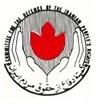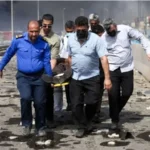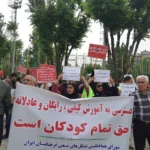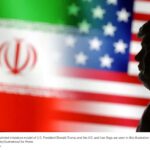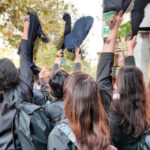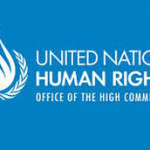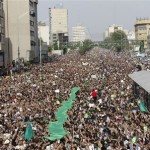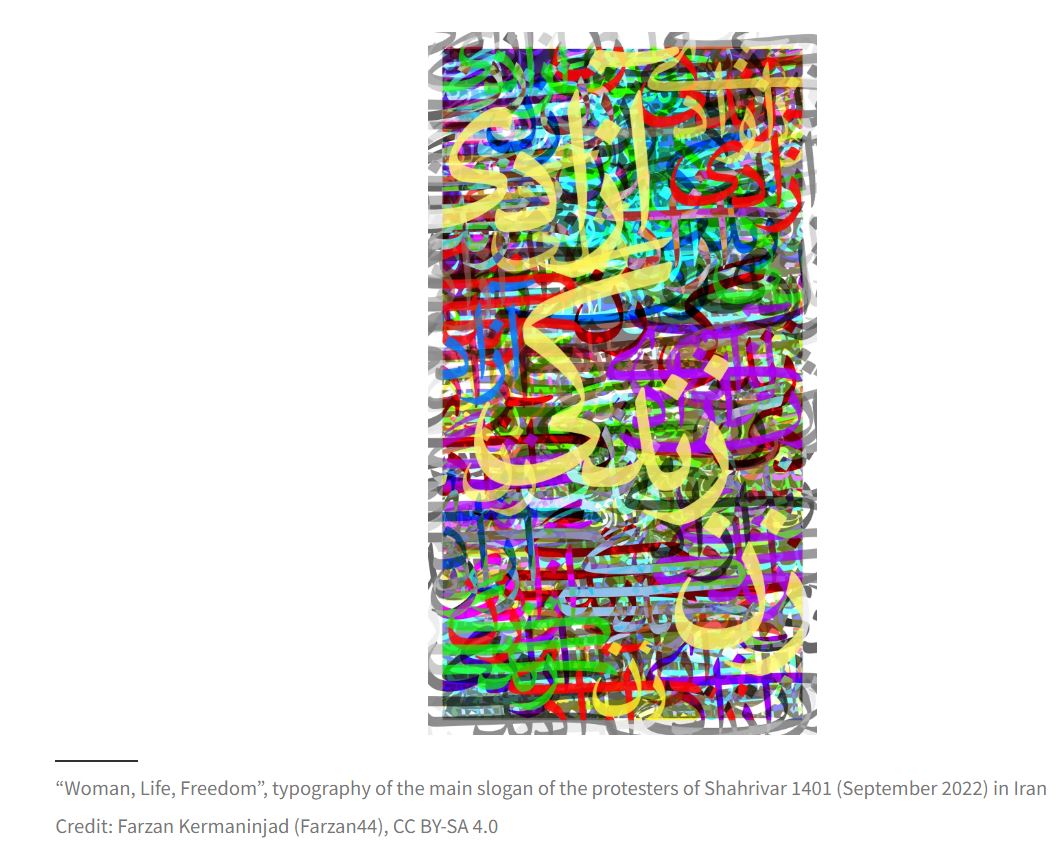
by Liberation|Published November 21, 2022
by Payam Solhtalab
The popular uprising of the Iranian people for their most basic rights and social justice goes on!
It will have escaped the attention of few readers and international observers that Iran has, over the last several weeks, been the scene of daily and widespread protests following the announcement (on Friday 16 September) of the death of 22-year-old woman, Mahsa Amini, in the custody of the so-called “[Morality] Guidance Patrol” in Tehran.
Since then, the country has borne witness to yet another popular uprising in all of its 31 provinces, in towns and cities across the land. Protesters have been demanding basic human and democratic rights, as well as social justice.
These protests are now into their ninth week, despite the ruling dictatorship’s default recourse to brutal violence and the looming spectre of an all-out onslaught to crush any sign of dissent. No-one aware of the truly horrific track record of the theocratic regime should be under any doubt as to what this could entail for the people of Iran – nor that it stands as testament to the courage and fortitude of the many Iranians still willing to take to the streets.
The Islamic Republic regime has seemingly been blindsided by the uprising and its continuation over many weeks with still no sign of its fading away. Despite the regime’s heavy-handed tactics and worn-out formulaic approach of attempting to cast all dissenters and protesters as fifth columnists working on behalf of the US, Britain, and their regional allies; particularly Israel and Saudi Arabia, the protests rage on and Iran returning to any semblance of ‘business as usual’ remains a remote prospect for the time being.
What began as protests against the killing of Ms. Amini, enforcement of mandatory hijab and the re-empowering of some of the most reviled organs of the Islamic Republic’s repressive state apparatus have morphed into something further… The people of Iran are now calling for an end to the ruling theocratic dictatorship!
Build-up to the current unrest
This current protest wave is the fourth large-scale and sustained uprising to take place in the country over the last 12 years.
In the wake of the violent suppression of the Green Movement, following the rigged presidential elections in June 2009, it became abundantly clear that the regime was utterly beyond the pale of reform. The deep cracks that spread across the Islamic Republic’s edifice of legitimacy with that realisation were permanent and could not be papered over. While attempts to do just that were made by the two-term Rouhani presidency, which came to office on a supposedly “reformist” ticket, the last few years have seen the eruption of mass protests and continuous industrial unrest. And along with the current explosion of anger and revulsion, the reality is laid bare for all to see that the ruling dictatorship and its frighteningly backwards theocratic tenets are deeply and widely rejected by the long-suffering people of Iran.
The current widespread protests follow on the back of two years of continued and widespread strikes by workers of various industries, teachers, and pensioners – as well as demonstrations by women and students – against the regime’s draconian and anti-people policies, which have brought about unprecedented levels of poverty for the population.
Corruption, mismanagement, and an economy in freefall
Even according to the regime’s own statistics, almost 40% of the population live below the poverty line in Iran. This is the result of three decades of neo-liberal economic shock therapy and policies imposed by the regime, all prescribed and encouraged by the IMF and World Bank no less – including unchecked privatisation, bankruptcy of many small to medium sized enterprises, sky-high unemployment, and the brutal eroding of workers’ rights and protections. The class interests of the regime are firmly and inextricably aligned with the interests of the country’s corrupt and parasitic big bourgeoisie which controls the entire economic and political direction of Iran.
In 2018, following the unilateral abrogation by the Trump administration of the Joint Comprehensive Plan of Action (JCPoA), a raft of inhumane sanctions was re-imposed on Iran. These sanctions have exacerbated the near-collapse of Iran’s currency and the freefall of its economy – hitting ordinary Iranian people the hardest. While the imposing and upholding of these sanctions by the US – through the sanctioning of any third party attempting to deal with Iran – is rightly seen as grossly unjust, there is also the widely-held perception among the Iranian people that the decades of ineptitude, mismanagement, and rampant corruption overseen by the regime has resulted in an economy acutely and uniquely susceptible to the damage wrought by such sanctions and woefully unable to provide even the slightest mitigation of their effects.
Imperialist interference and subterfuge
It is also beyond doubt that imperialist forces, the US and Britain chief among them, and their reactionary allies – particularly the Kingdom of Saudi Arabia and the Israeli apartheid regime – see the current turbulence and upheaval in Iran as an opportunity to interfere in the country’s internal affairs and make sure their malevolent designs and interests are carried there. This is done by buttressing and facilitating fiercely anti-democratic forces discredited by the majority of ordinary Iranians, such as the remnants of the ousted Shah’s regime and the Mojahedin-e Khalgh Organisation (MKO), also known as the National Council of Resistance of Iran (NCRI), which is currently based in Albania and bankrolled by Saudi Arabia.
Meanwhile, media platforms backed by these same forces receive extensive funding and resources to establish hegemony over external reportage of the protests and developments in Iran – to essentially drown out those dissenting voices that remain unaligned with their controlling interests and the imperialist agenda behind them.
That having been stated, despite the false projections of some well-financed exile groups, it is abundantly clear that the vast majority of protesters inside Iran – as well as the population at large – remain unmoved by these groups’ designs and slogans and are firmly opposed to any imperialist intervention in Iran.
Indeed one of the main slogans of the current protest movement, particularly resounding around the country’s university campuses – which have once more assumed their traditional role as hotbeds of organised opposition to the regime – translates as, “Down with the oppressor; whether Shah or Supreme Leader!”
One of the main calls of Iranian progressive and left-wing forces has been for the formation of a broad popular anti-dictatorial front whose central aim is the ousting of the Islamic Republic dictatorship and its replacement by a national democratic government disposed towards establishing freedom, independence, and social justice in Iran.
The Islamic Republic’s “anti-imperialist” charade
One major cause of confusion in left-wing and progressive circles internationally has been the mischaracterisation of the regime in Iran as an avowed anti-imperialist force, often owing to its record of posturing against the US.
However, it must be stressed that despite the Iranian regime’s blustery anti-imperialist rhetoric and its extra-territorial manoeuvrings in the region, beneath the surface the Islamic Republic has been a faithful aid to imperialist designs and interests throughout its existence. This ranges from its support for the Contras in Nicaragua, and secret relationship with the US and Apartheid South Africa, during the 1980s; through to its active and duplicitous participation in the US’ destabilisation and overthrow of the People’s Democratic Republic of Afghanistan, the civil war in Tajikistan, the subsequent invasions and occupations of both Afghanistan and Iraq; and its continued support for some of the most reactionary forces in the region (including the Taliban). And, this is a mere snapshot… So much for the Islamic Republic’s supposed anti-imperialist record!
The foreign policy of the Islamic Republic of Iran is driven solely by the survival instinct of the theocratic regime. The regime’s foreign policies are adventurist and dangerous and neither represent nor serve the interests of the Iranian people one iota!
The Iranian regime’s cold and calculated mass-murder of thousands of political prisoners (many of whom were drawn from Iran’s left-wing and progressive opposition parties) in the summer of 1988 was a crime against humanity – one for which it remains unapologetic and whose perpetrators now occupy high office. Along with the killings and forced disappearances of so many more, this should serve to underline the true nature of the regime and permanently dispel any notions regarding its supposedly progressive credentials.
The domination of the theocratic regime and Political Islam, since the setback of the popular 1979 Revolution in the early 1980s, has been the obstacle to the much-needed fundamental transformations in Iran in order to ensure peace and sovereignty; human and democratic rights and freedoms; and social justice. What has in fact transpired in Iran over the last 40 years is the betrayal and defeat of the 1979 Revolution’s core tenets and objectives, most of which remain as pertinent today as they did back then.
_ _ _ _ _ _ _ _ _ _
Liberation is increasingly and gravely concerned by the current situation inside Iran. Protests originally spurred by the killing of a young woman in the custody of the “[Morality] Guidance Patrol” for allegedly not properly adhering to the rules on mandatory hijab – the mere existence of which underline the reactionary disposition of the ruling regime – have quite understandably escalated into calls for fundamental change in Iran.
The people of Iran, with women and youth at the very forefront, with courage and dignity, are now facing-off against a murderous dictatorship which has proved itself incapable of reform or heeding the calls of the population it rules over. Their calls are for some of the most basic of human rights – those of the kind often taken for granted elsewhere – the holding of a legal referendum on the country’s constitution, and an end to over four decades of horrific repression. The response of the dictatorship has been the use of brutal, even lethal, force on the streets; forced disappearances; mass arrests; torture; rape and sexual violence; and the instigation of show trials along with the issuing of death sentences.
We encourage our affiliates and supporters, particularly in the labour and trade union movement in Britain, as well as anyone following our work, to make clear their concerns and principled opposition to the worrying course of action taken by authorities in Iran in writing. Letters should be addressed to the embassy or diplomatic mission of the Islamic Republic of Iran.
Finally, we echo the key calls of our affiliate, CODIR, a long-established Britain-based progressive organisation for solidarity with the Iranian people, for the immediate release of all those detained over during the current protests, and their safe return to family and loved ones; the release of all political prisoners and prisoners of conscience held in Iran; abidance by the government in Iran with its commitments and obligations under international human rights law; and the swift formation and dispatch to Iran of a fact-finding committee, under the auspices of the UN Human Rights Council, tasked with investigating all incidents arising from the current protests as well as the serious allegations of human rights violations perpetrated by the authorities in Iran.
For more information on CODIR and developments in Iran, please visit www.codir.net and follow them on Twitter (@CODIRInfo).
We invite all those who take up the letter-writing initiative to share copies of their correspondences with CODIR via their email ([email protected]).
Latest update on the critical situation in Iran
In the two months leading up to Thursday 17 November, 381 protesters are known to have been killed; 57 minors killed; 50 members of the regime’s forces killed; 16,088 people are known to have been arrested, 497 of whom are students; 2,097 detainees have been identified; and 990 separate protests have taken place across 146 cities and 140 university and college campuses around Iran.
Protests have continued in earnest in defiance of a warning by the head of the Islamic Revolutionary Guard Corps (IRGC) that they must stop; a vote by 227 of Iran’s 290 legislators on Sunday 6 November that the death penalty be applied to those protesters brought before the courts on charges of serious crimes against the state; as well as repeated demands by regime chiefs for a hard line to be taken against the protesters.
Iran’s execution rate in proportion to the size of its population is the highest in the world. Five death sentences have been issued on charges relating to the unrest since the beginning of specially convened court sessions, including public trials in Tehran, over a week ago – with Amnesty International warning that a further 21 have been charged with offences which carry the death penalty under the Islamic Republic’s law. This has alarmed human rights activists and NGOs given that these trials are barely underway.
In another gravely ominous signal, on Saturday 19 November, Supreme Leader Ayatollah Ali Khamenei predicted an end to the “evil” current protests, stating that they are “doomed to failure”, according to Iranian state news agency IRNA. This has been widely interpreted as his giving a nod to the regime’s security forces to finally and decisively move on the protest movement.
This has coincided exactly with a major crackdown by the regime over the weekend, particularly targeting the restive Iranian Kurdistan region – with the release of footage showing helicopters carrying IRGC commandos into the city of Mahabad amid reports of significant military redeployments there as well as heavy gunfire. The situation is said to be critical in the town of Divandarreh, while explosions and heavy gunfire have also been reported in Bukan, Saqez, and Sanandaj – seemingly indicating that a military response on the part of regime forces is now underway.
Payam Solhtalab is a peace activist, member of the National Executive Council of the Committee for the Defence of the Iranian People’s Rights (CODIR), member of Liberation, and regular contributor to Liberation Journal.

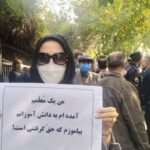
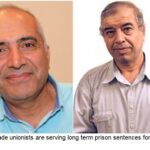
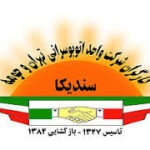

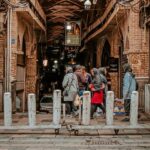
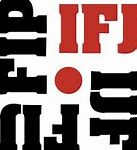



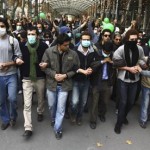
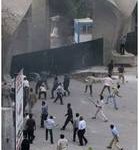
 Posted in
Posted in 